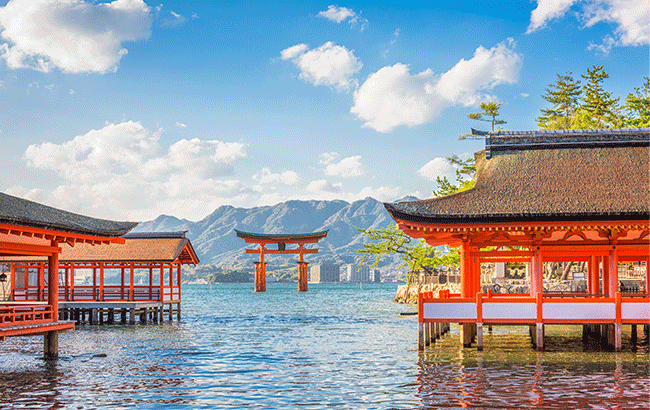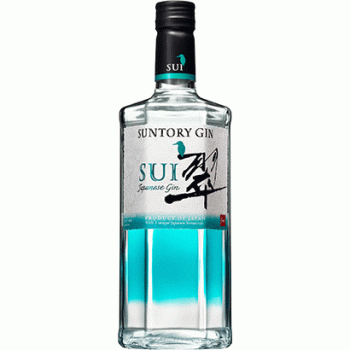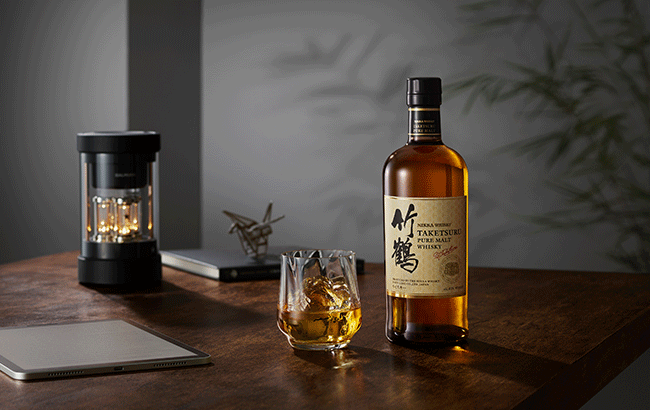How the Japanese spirits sector is driving recovery
By Nicola CarruthersFrom alcohol bans during the Tokyo Olympics to natural disasters damaging distilleries, the Japanese spirits industry has experienced a variety of challenges over the past few years. We look at how the country’s producers are powering through.

*This feature was originally published in the September 2021 issue of The Spirits Business magazine.
All eyes were on Japan this summer as it hosted the Tokyo 2020 Olympic Games after being delayed by a year because of the pandemic. After 18 months of economic crisis, the Games were mainly held behind closed doors due to surging Covid‐19 cases.
The Games were held against a backdrop of controversy, as public support for them being hosted this year was mixed with concerns about the virus. Sixty per cent of voters in Tokyo wanted the Olympics and Paralympics called off this summer, according to a survey in June by Japanese newspaper AsahiShimbun. Furthermore, just over half said no spectators should be allowed.
While Japan is recognised globally for its whisky, the Olympics could have helped propel lesser‐known spirits and brands from the country further into the public eye.
Kris Elliot, co‐founder of High Road Spirits, US importer of small Japanese whisky producers such as Mars, Chichibu and Akkeshi, says: “There was definitely a lot of plans from our producers to be launching and releasing products during the Olympics, at a time when the entire world was focusing on Japan. It was going to be a really big deal.”
Hideki Kanda, president and CEO of Suntory Spirits, says: “It was a big loss for our business, especially compared with what we had planned for before the pandemic.”
According to IWSR Drinks Market Analysis, the Japanese spirits industry continued to struggle during the first half of this year as a result of the pandemic and the nation’s fourth state of emergency, which was introduced on 17 July and extended to 12 September. As such, venues were told to stop serving alcohol and to close by 8pm, in a bid to encourage locals to stay home and watch the Games.
The closure of the on‐trade during the Olympic season saw producers turn their efforts to home consumption. Kanda says: “The ban of alcohol sales in on‐trade outlets had a large impact on sales, but we managed to compensate for the decrease by [boosting] home consumption.”
Suntory says it “captured the demand of home consumption as people celebrated at home, thanks to Highball cans and RTDs, which showed significant growth”.

Kanda adds: “We also launched a campaign to bundle up our The Strong Tennensui Sparkling, a bottled soda with high carbonation, with bottled spirits such as Jim Beam and Sui Gin, aiming for additional home consumption, which was also well received by consumers.”
Positive focus
Kaikyo Distillery’s general manager, master distiller and blender, Kimio Yonezawa, says the company “did not want to take the risk of creating communication campaigns or activations around the Games”. However, he says the Olympics “brought a positive focus to Japan that benefitted all Japanese brands internationally, including spirits and sake”.
Piotr Poznanski, research director at IWSR Drinks Market Analysis, says the restrictions on the country’s bars “negatively impacted the on‐trade, with key categories such as beer, wine and whisky declining by 3%, 10% and 8% respectively”.
However, he notes that RTDs, the market’s second‐largest drinks category after beer, “maintained momentum and continue to develop further, gaining approximately 5% on volumes from last year”.
Poznanski says the boom in RTDs is due to brands “maintaining high levels of investment and innovation”, while noticing a trend for no‐and‐low products in the RTD sector. He adds: “RTDs are also expected to benefit from the ongoing pandemic as they are among the cheapest category and the most popular drink to have at home.”
However, he notes that RTDS “are competing fiercely against the much bigger no/low‐alcohol beer category”, as products start to become more similar in packaging and attributes.
Naveen Modekurti, managing director of Sakurafresh Beverage & Food, which produces non‐alcoholic drinks including bitters and liqueurs, says it has a been a “tough time for beverage companies because pubs and bars are still closed”. He believes it will take years for the industry to recover.
Shōchū brand Iichiko turned its attention to the US to attract consumers, hosting an izakaya (a Japanese tavern) experience at New York bar Kantana Kitten, with a large projector screen showing the Games. Iichiko also hosted a sports‐inspired cocktail competition in the US in August, inviting bartenders to submit a recipe inspired by a favourite sport for the chance to win a trip to Tokyo and Kyushu Island, home of the Iichiko distillery.
Tetsuro Miyazaki, general manager of Iichiko USA, says the company’s goal is to establish shōchū as a worldwide spirit, with a focus on the bar industry. “The more players in the market, the more attention the category will get,” he adds.
He says there are many changes in Japan’s bar industry. “In the past, shōchū was served only at sushi restaurants, not in bars. Our strategy is to become the pioneer shōchū for the bar industry.” To increase its use in cocktails, the brand released its higher‐ABV Saiten shōchū in the US in March 2019. The company plans to release the product in London, followed by Singapore and Japan. Iichiko also offers two Highball RTDs in Japan, with a third variant to follow.

In July 2020, heavy rains hit the region of Kyushu, in southwestern Japan, leading to extensive river flooding and causing major damage to shōchū producers in the area, where there are 27 distilleries. The floods resulted in the deaths of 77 people, and caused thousands of buildings to be damaged. According to the Kuma Shōchū Association, several distilleries were completely destroyed by the floods, including Yamatoichi Shuzomoto & Co, Fuchita Shuzo Co and Fuchita Shuzo Honten. Sengetsu Shuzo Co was also partially damaged.
Kazunobu Torikai, president of the Kuma Shōchū Association, says the scale of the flood was unthinkable, as there hasn’t been a flood in 400 years. The government has now raised the banks that surround the Kuma River higher.
All of the distilleries in the region helped the three producers get back on track, Torikai says. Several of the sites have now recovered from the floods. Torikai adds: “Covid has been around since last year. We knew it would last for a longer time. Most Japanese people were not expecting too much of the economy to recover. What’s worrying is the future, now that the pandemic is increasing in Japan, people are still dying, and we worry about what’s going to happen.”
Under pressure
Poznanski notes that Japanese whisky production is “under a lot of pressure”, but he says “more companies are investing heavily to meet the growing demand driven mainly by the Highball drink”. He cites Suntory’s release of its first rice‐based whisky as an example.
He adds: “Many shōchū producers have also begun whisky production and new craft whisky distilleries have appeared on the market, which will help the premium and super‐premium segments recover.”
Poznanski also highlights another potential threat: “The impact of inexpensive, high‐ABV drinks on people’s health.” He adds: “Pressure from health groups towards removing higher‐ABV brand lines is already pushing the leading producers to invest in lower‐calorie, lower‐ABV, and/or lower‐sugar product innovation.”
Suntory is one of the companies planning to tap into this trend. The firm will release a sugar‐free RTD to attract health‐conscious consumers.
Kaikyo Distillery also dealt with disruption to its logistics as a result of the pandemic.
Yonezawa has had to cope with a “shortage of containers that has led to increase the cost of transportation by three or sometimes four times. Since March, we are also facing issues with the supply of some dry goods, typically closures and bottles,” he explains.
“They take more time to be delivered. Overall, this is creating tensions on our cost of goods. Luckily, we are not facing being out of stock in the market, despite positive sales. We are watching this very closely.”
Raw material shortages
Elliot, of High Road Spirits, says there have been glass and raw material shortages around the world, causing production to slow. “From a logistical standpoint, it’s taken three to four times longer to get product from Japan,” he adds.
This year also saw the introduction of new guidelines for the production of Japanese whisky. The Japan Spirits and Liqueurs Makers Association revealed the new standards to ‘protect the interests of consumers, ensure fair competition among businesses and improve quality’.
The new production standards stipulate that malt must always be used in the making of Japanese whisky, but other grains can also be used. Maturation should take place in wooden barrels with a maximum capacity of 700 litres, and Japanese whisky must be matured in the country for at least three years. Bottling must also take place in Japan at a minimum strength of 40% ABV.

Poznanski says: “The industry believes that the new regulations will have very little impact on the Japanese whisky market, at least not during the next few years. The new regulations will not be applied until March 2024, so there is more than a two‐year grace period, but even then, the regulations will be voluntary, not law. Some local producers have already started releasing brands clearly labelling where the content of the bottle comes from, which has been positively received by the consumer.”
High Road’s Elliot says producers are “very excited about the regulations” but he warns there is “a lot of wiggle room and not enough clarity”. One positive, he says, is that some blind‐tasting competitions have adopted the rules and brands must now meet the new criteria to enter.
New demands
Suntory’s Kanda says the firm plans to “take advantage” of its brewing and distilling techniques to “work on creating new demands for 2021”. The firm will focus on four areas: providing high‐quality whisky Highballs; expanding half‐size bottles of premium whisky to grow consumer engagement and increase fans; and maintaining its leading position in RTDs, spirits and liqueurs through new products that meet consumer needs.
The fourth area is creating new demands by launching new‐to‐the‐market opportunities, such as non‐alcoholic lemon sours (Nonarubanshaku Lemon Sour Non‐Alcohol), and gin and soda, using Sui Gin that matches food.
Kanda adds: “We are also working on new products that meet home‐consumption needs. While demand for premium brands is showing steady growth, uncertainness is triggering growing demand for reasonable products, including large capacity products. We are confident that the quality of our products will also provide reassurance to consumers and will continue our efforts to meet their needs.”
Related news
Harrison Ford and Glenmorangie spread Christmas cheer
